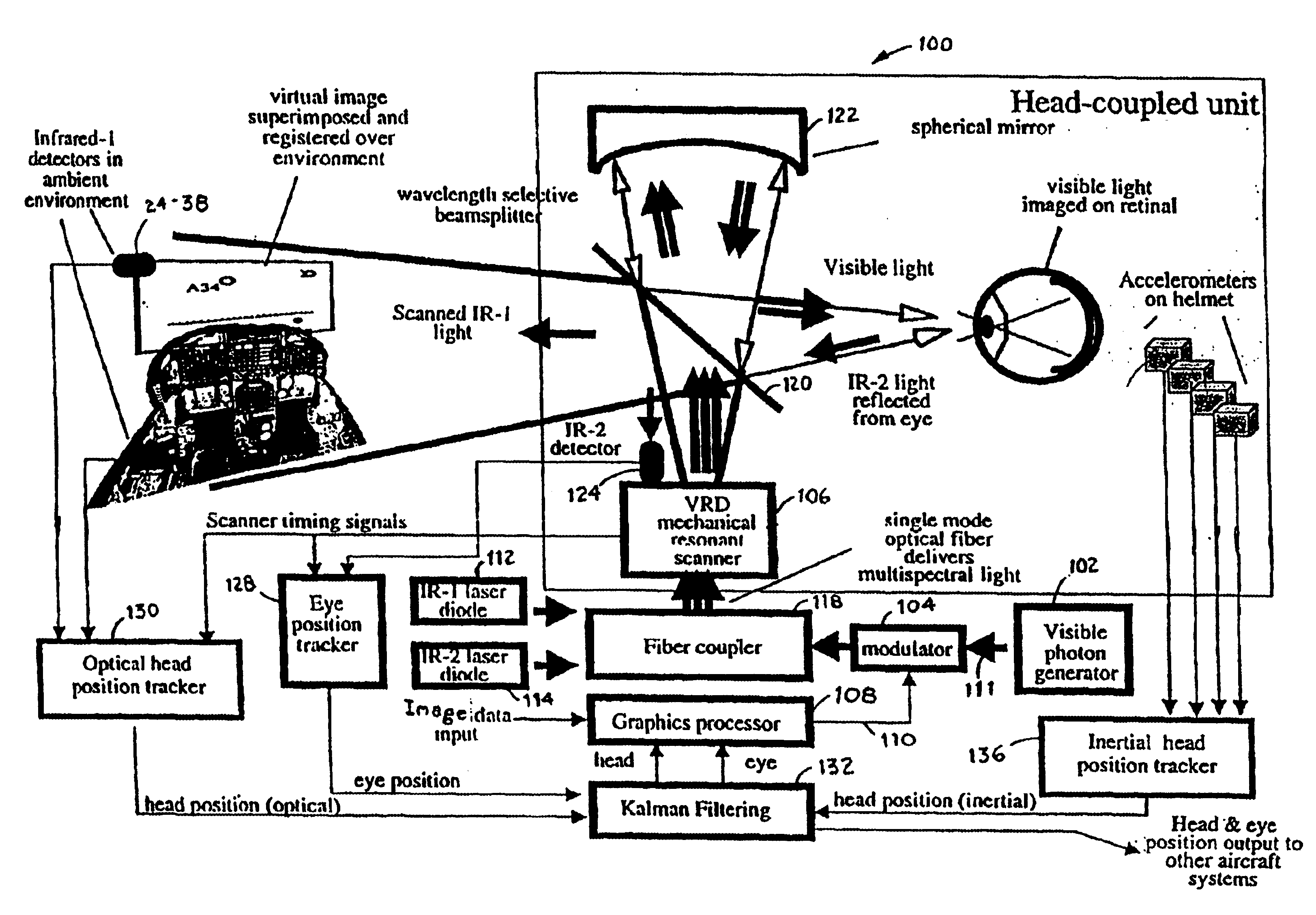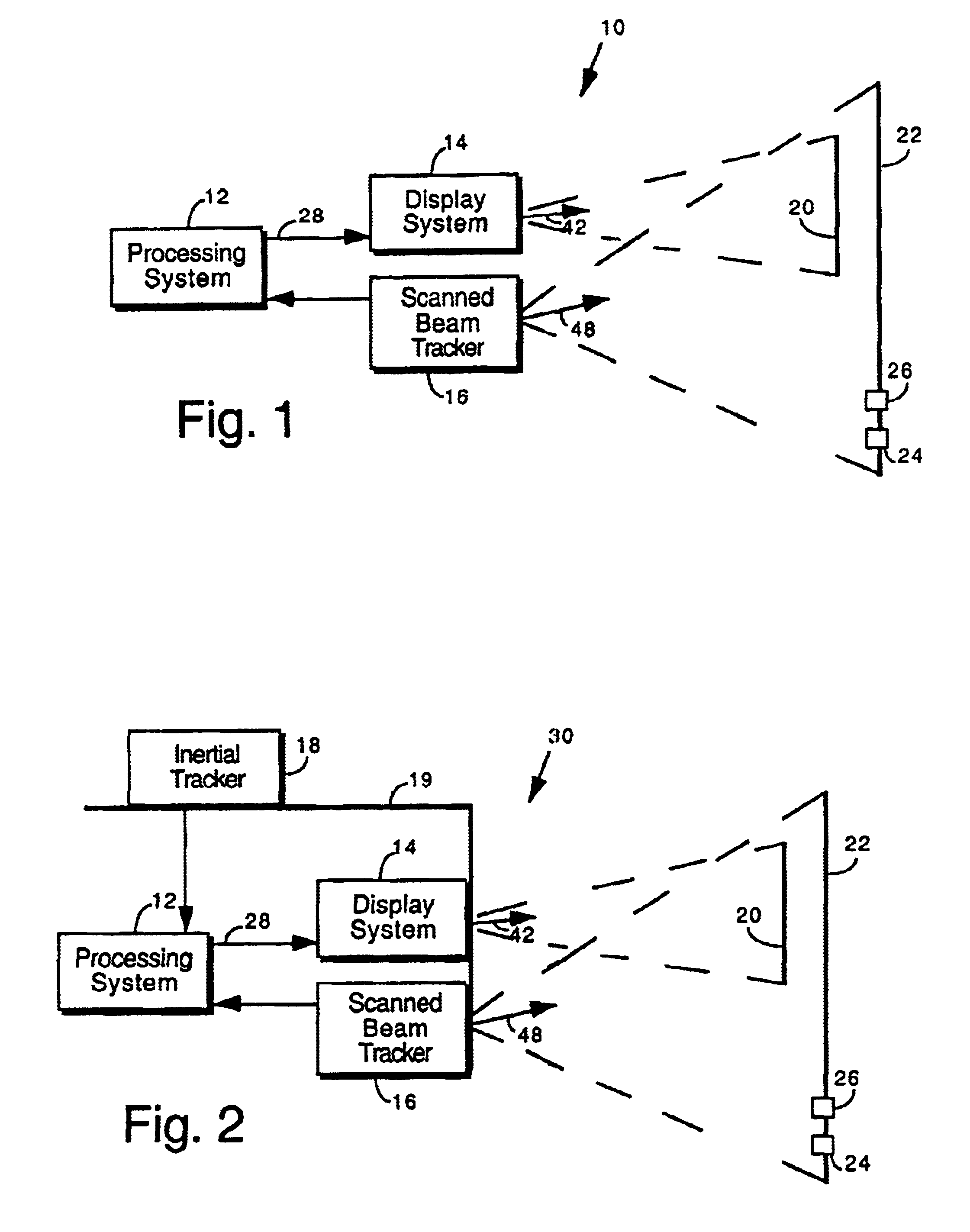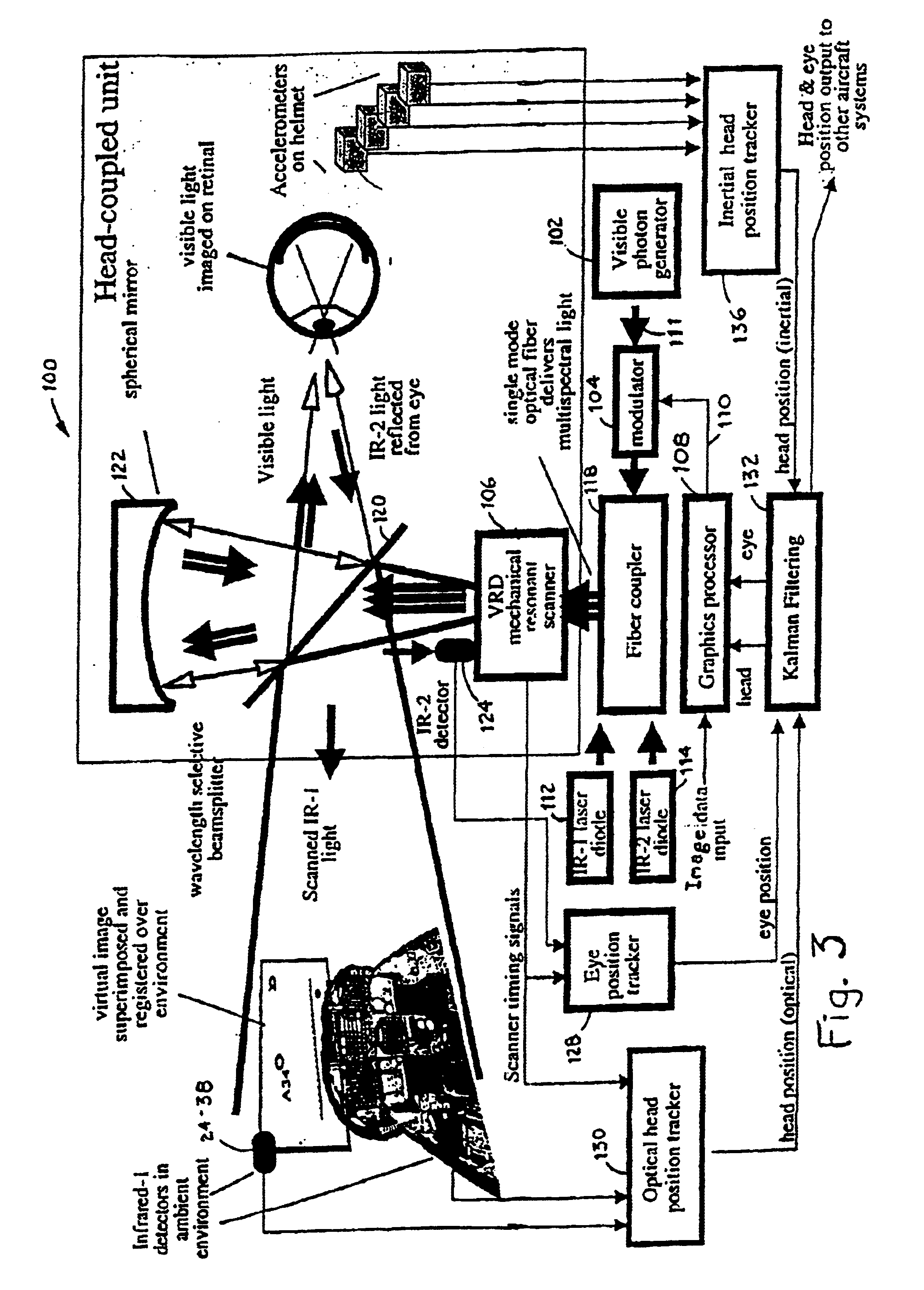Virtual image registration in augmented display field
a virtual image and display technology, applied in static indicating devices, instruments, optical elements, etc., can solve problems such as drifting errors in the innermost tracker, and achieve the effects of accurate positioning, increased overall update of the hybrid system, and more accurate prediction
- Summary
- Abstract
- Description
- Claims
- Application Information
AI Technical Summary
Benefits of technology
Problems solved by technology
Method used
Image
Examples
Embodiment Construction
Overview
FIGS. 1 and 2 show alternative embodiments for an augmented reality imaging system. The augmented reality imaging system 10 of FIG. 1 includes optical tracking to provide accurate augmented image registration relative to the real world background. The augmented reality imaging system 30 of FIG. 2 includes hybrid tracking to provide accurate augmented image registration relative to the real world background. The hybrid tracking includes optical tracking and inertial tracking implementing a higher tracking update rate.
An objective of an augmented reality imaging system is to enhance human interaction with the real world using computer-generated information that is related to real world objects. For example, in a bioengineering application augmented reality information is beneficial in guiding a surgeon during a needle biopsy. The surgeon can look directly at the patient while the augmented imaging system projects an ultrasound image over the real one, allowing for simultaneous...
PUM
 Login to View More
Login to View More Abstract
Description
Claims
Application Information
 Login to View More
Login to View More - R&D
- Intellectual Property
- Life Sciences
- Materials
- Tech Scout
- Unparalleled Data Quality
- Higher Quality Content
- 60% Fewer Hallucinations
Browse by: Latest US Patents, China's latest patents, Technical Efficacy Thesaurus, Application Domain, Technology Topic, Popular Technical Reports.
© 2025 PatSnap. All rights reserved.Legal|Privacy policy|Modern Slavery Act Transparency Statement|Sitemap|About US| Contact US: help@patsnap.com



